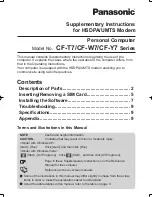
Order No. 2104 ..
4.2.4.5 Logic gates
Logic gates
In order to implement logical dependencies from external states as well or to cascade, the
device software has four logic gates. Each gate can have from one to a maximum of four inputs.
For each logic gate, the type of logic operation "AND","OR", "exclusive OR", "AND with
feedback" can be set. In addition, each input can be operated normally or inverted.
The communication objects of the outputs can be configured as 1-bit or 1-byte objects.
Switching outputs can also work inverted. The inputs can be used separately with their own
communication objects. Alternatively, an input can be assigned to a limiting value, dew point
alarm or 1-bit logic gate output. The outputs can work with a time delay. The transmission
criterion for input event, output change and cyclical transmission can be set.
For more complex functions it is possible to combine a number of logic gates. Feedback, i.e.
connecting an output with an input of the same gate (poss. also via other logic gates) is not
prevented by the configuration software. This does not interfere with the other device functions.
i
Because feedback can lead to a very large number of telegrams, reasonable switch-on or
switch-off delays should be set in such cases.
i
As a rule, a logic operation is only evaluated when an input telegram is received. If a
feedback with a cyclically sending output is created, it may occur that the device will send
telegrams independently after the application is loaded or after a reset. In this case, too,
switch-on or switch-off delays are highly advisable.
i
With an "AND with return" the value of the output is fed back internally to input 1. The result
of this is that the output can only have the value "1" again if input 1 is set to "1" after the
value "1" is already present on all of the other inputs. As soon as one of the other inputs is
given the value "0", the output and thus input 1 is set to "0" because of the feedback.
Example: A luminaire that should first be switched on manually at dusk and switched off
again automatically at dawn. Here the push-button is linked to input 1 and the limiting value
of the twilight sensor is linked to input 2. After the twilight sensor has set input 2 to "1", the
push-button on input 1 can be used to switch on the light. If the user forgets to switch the
light off again manually, when daylight comes the feedback ensures that input 1 is reset
internally to "0". Without this feedback the light would be switched on again automatically at
the next twilight.
Parametrizing logic gates
The following settings must be made in order to use a logic gate...
o
Configure the "Number of logic gates" required (max. four) on the parameter page
"Configure logic gates".
On the parameter page "Logic gates -> Logic gates X"...
o
Select the "Type of logic operation".
o
In the parameter "Number of inputs", select a number of inputs between 1 and 4.
o
Select the number of outputs and data format in the parameter "Number and type of output
objects".
o
In parameter "Send output when", select under what precondition the output object should
be sent.
o
Set the parameter "Transmission behaviour for logic "1".
o
Set the parameter "Transmission behaviour for logic "0".
Page 111 of 171
Software "KNX CO2 sensor"
Functional description
















































